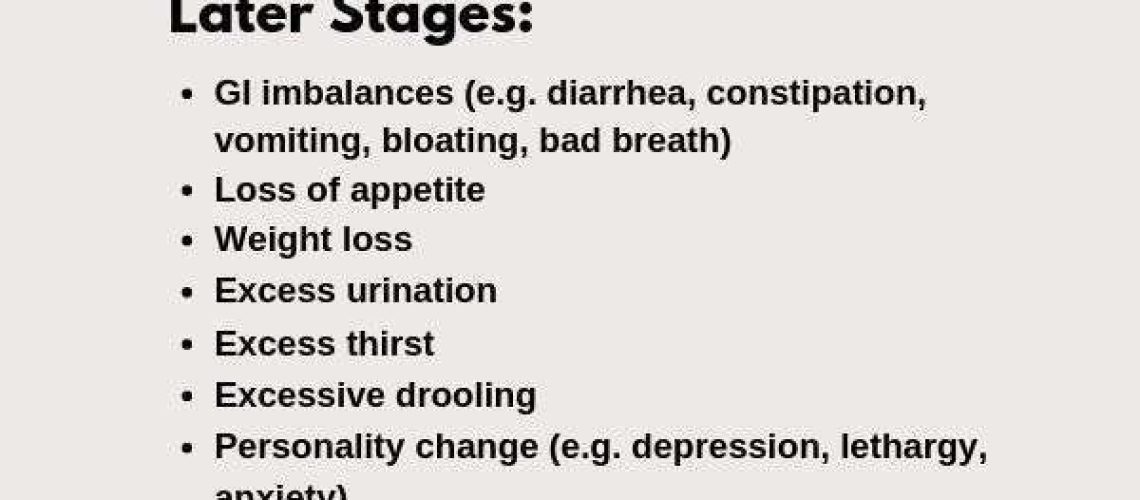Key Takeaways:
- Liver disease in dogs can be caused by various factors such as infections, toxins, medications, and genetic predispositions.
- Common symptoms of liver disease in dogs include loss of appetite, weight loss, vomiting, diarrhea, jaundice, and increased thirst and urination.
- Early diagnosis is crucial for successful treatment of liver disease in dogs. Regular veterinary check-ups and blood tests can help detect any abnormalities in liver function.
- Treatment options for liver disease in dogs may include medication to manage symptoms, dietary changes to support liver health, and in severe cases, surgery or liver transplantation may be necessary.
- Preventing liver disease in dogs involves avoiding exposure to toxins or medications that can harm the liver, maintaining a balanced diet with proper nutrition, and regular exercise to promote overall health.
Are you a dog lover? Do you want to ensure that your furry friend stays healthy and happy for years to come? Then, understanding liver disease in dogs is essential. Liver disease is a common and potentially life-threatening condition that affects our canine companions. By delving into this subject, you will gain valuable knowledge on how to detect the early signs of liver disease, prevent its progression, and provide the best care for your beloved pet. Did you know that up to 80% of liver diseases in dogs are preventable with proper nutrition and regular check-ups? Join us as we explore the fascinating world of liver disease in dogs and discover simple steps you can take to safeguard your four-legged companion's health. Together, let's embark on this journey towards a healthier and happier future for our furry friends!
Understanding Liver Disease in Dogs: What You Need to Know
Liver Function in Dogs
The liver is an important organ that performs many vital functions in a dog's body. It helps with digestion, stores vitamins and minerals, filters toxins from the blood, and produces bile to aid in the digestion of fats. When the liver is not functioning properly, it can lead to various health issues.
Liver Disease Basics
Liver disease in dogs refers to any condition that affects the normal functioning of the liver. There are different types of liver diseases that can affect dogs, including hepatitis, cirrhosis, and liver tumors. These conditions can be caused by infections, toxins, genetics, or other underlying health problems.
Causes of Liver Disease in Dogs: How It Happens and Common Triggers
Infections and Toxins
Infections such as viral or bacterial hepatitis can damage the liver and lead to liver disease in dogs. Exposure to certain toxins like medications (such as NSAIDs), pesticides, or poisonous plants can also harm the liver. It's important to keep your dog away from potential sources of toxins and ensure they receive proper vaccinations.
Genetics and Breed Predisposition
Certain breeds are more susceptible to developing liver diseases due to genetic factors. For example, Labrador Retrievers are prone to copper-associated hepatitis, while Doberman Pinschers have a higher risk of developing chronic active hepatitis. Understanding your dog's breed-specific risks can help you take preventive measures.
Recognizing the Symptoms of Liver Disease in Dogs: What to Look Out For
Common Symptoms
Liver disease symptoms may vary depending on the severity and type of condition but often include:
- Loss of appetite
- Weight loss
- Vomiting or diarrhea
- Increased thirst and urination
- Jaundice (yellowing of the skin and eyes)
- Lethargy and weakness
Subtle Signs to Watch For
Sometimes, liver disease in dogs can present with more subtle signs that may easily be overlooked. These can include changes in behavior, excessive drooling, bad breath, or an enlarged abdomen. If you notice any unusual changes in your dog's health or behavior, it's important to consult a veterinarian for a proper diagnosis.
Diagnosing Liver Disease in Dogs: Tests and Procedures Veterinarians Use
Blood Tests
Blood tests are commonly used to assess liver function in dogs. These tests measure levels of enzymes, proteins, and other substances that indicate liver health. Elevated levels of certain enzymes like ALT and ALP can suggest liver damage or inflammation.
Imaging Techniques
Veterinarians may also use imaging techniques such as ultrasound or X-rays to visualize the liver and detect abnormalities. These non-invasive procedures can help identify liver tumors, cysts, or structural changes that may be contributing to the disease.
Treating Liver Disease in Dogs: Options for Helping Your Furry Friend
Dietary Management
In many cases, dietary management plays a crucial role in managing liver disease in dogs. A veterinarian may recommend a special diet that is low in protein but high in easily digestible carbohydrates. This helps reduce the workload on the liver and provides necessary nutrients for healing.
Medications and Supplements
Depending on the specific condition, medications or supplements may be prescribed by a veterinarian to support liver function. These can include antioxidants, anti-inflammatory drugs, antibiotics (if there is an infection), or medications to improve bile flow.
Preventing Liver Disease in Dogs: Steps to Keep Your Pet's Liver Healthy
Proper Vaccinations and Preventive Care
Ensuring your dog receives proper vaccinations, including those for viral hepatitis, can help prevent liver infections. Regular veterinary check-ups and preventive care, such as flea and tick control, can also reduce the risk of exposure to toxins that may harm the liver.
Avoiding Harmful Substances
To protect your dog's liver health, it's important to keep them away from harmful substances. This includes avoiding feeding them human foods that are toxic to dogs (such as chocolate or grapes), keeping household chemicals out of reach, and being cautious about medications or supplements that could be harmful.
Remember, early detection and intervention are key when it comes to liver disease in dogs. By understanding the causes, recognizing symptoms, seeking proper diagnosis and treatment, and taking preventive measures, you can help keep your furry friend's liver healthy and ensure their overall well-being.
In conclusion, liver disease in dogs is a serious condition that can cause various symptoms and complications. It is important for dog owners to be aware of the signs and seek veterinary care promptly to ensure their pet's health and well-being.
How long does a dog live with liver disease?
The average survival rate for chronic hepatitis cases is typically 2 to 3 years, depending on the seriousness of symptoms and the effectiveness of treatment on the liver.
Can a dog recover from liver disease?
The liver has the ability to regenerate, meaning that if liver disease is detected early, dogs have the potential to fully recover and enjoy a healthy life. However, in severe cases, more intensive treatment may be necessary, and in extreme situations, the liver disease may be too advanced to be effectively treated.
What are the four stages of liver disease in dogs?
Stage one of liver damage is characterized by abnormal inflammation and can usually be managed through medication or dietary adjustments. In stage two, fibrosis sets in and the liver starts to harden, but there is still a chance for treatment and potential reversal. Stage three is marked by cirrhosis, which involves permanent scarring of the liver. The final stage is liver failure, where the liver is no longer able to function adequately. (Note: the date mentioned is not necessary for the paraphrase.)
What do you give a dog with liver disease?
When choosing protein for a cat or dog with liver disease, it's important to consider the type of protein. Proteins with high biological values produce less waste. Good protein options for liver disease include eggs, as they are highly bioavailable and have a good amount of choline. Poultry and small amounts of fish like sardines, salmon, and cod are also recommended.
When should I euthanize my dog with liver disease?
Dogs in the early and middle stages of liver disease can be effectively treated and still have a good quality of life. However, when the disease reaches the third stage and the symptoms become unmanageable, veterinarians may recommend euthanasia as a way to relieve suffering.
Are dogs with liver disease in pain?
Lethargy can be a symptom of liver failure, which can be caused by pain, nausea, fever, low blood sugar, or internal bleeding.

















